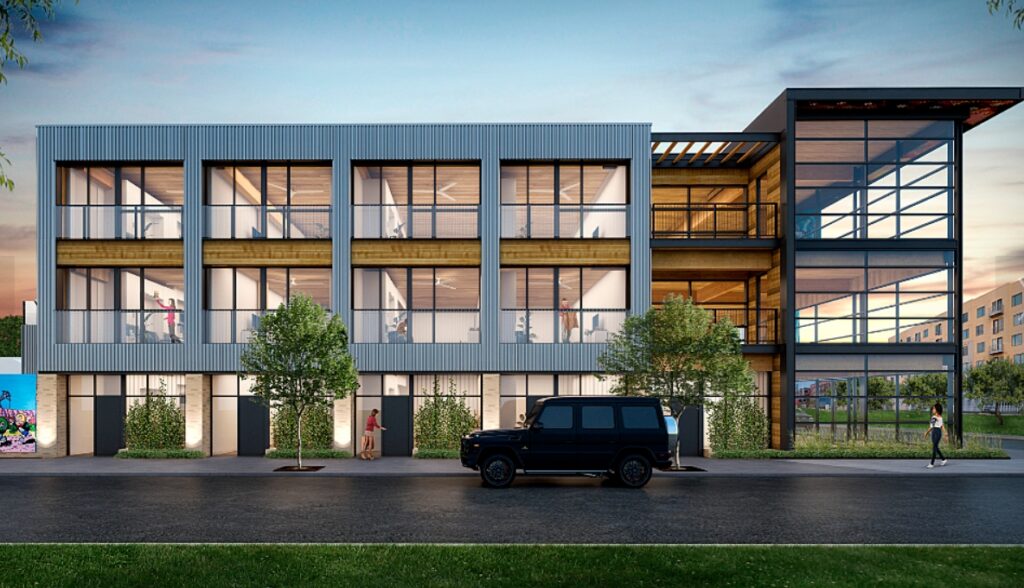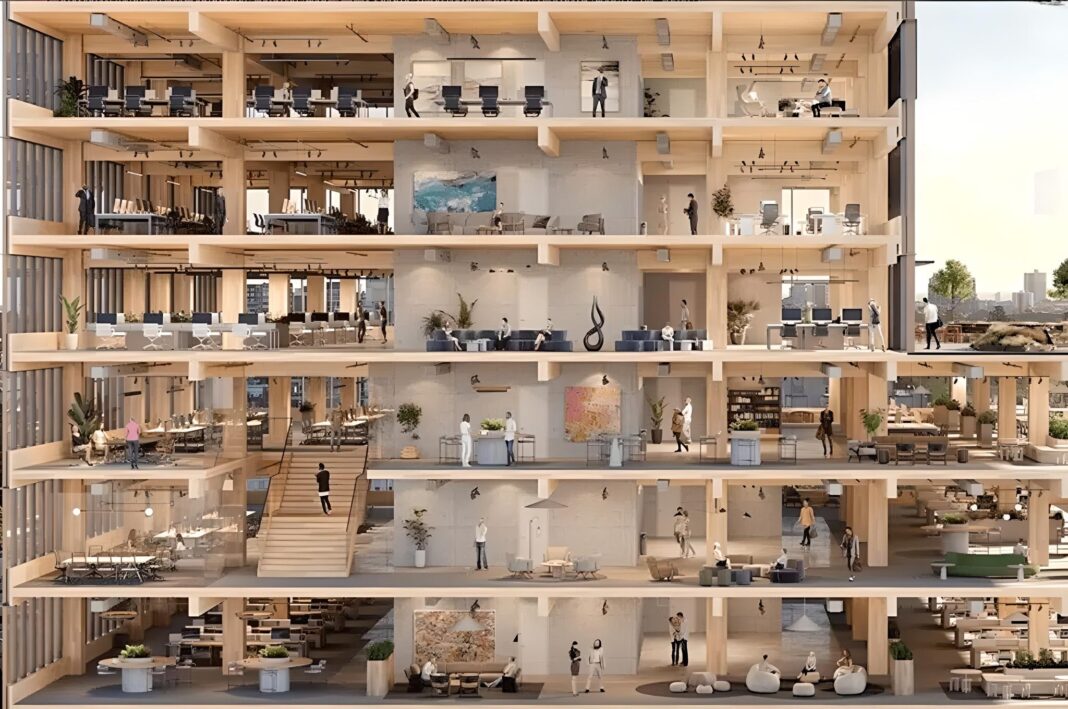Lighter, greener, and faster to build, timber buildings are now leasing faster and commanding premium rents relative to steel and concrete buildings—and this is just the start, with developers and architects turning to timber to build the next generation of “mixed-use” assets.
Not only are mass timber buildings 35% lighter than traditional buildings, but they also emit 40% less carbon. Major real estate developers are looking to smaller, greener projects to de-risk development. And thanks to improving supply chain capacity, costs are coming down, fueling a new wave of investment in mid-rise and high-rise construction.
That is according to two of the world’s largest real estate developers, Hines Real Estate and Howard Hughes Holdings, who last week spoke of the push to build mid-rise and high-rise office buildings out of tall timber:
“The velocity of the leasing is the market speaking to us,” according to Hines Senior Managing Director John Mooz, who spoke as part of a panel including Howard Hughes and Genslar at the National Association of Real Estate Editors conference in Austin, Texas last week, adding that the cost of timber systems is just 5-10% higher than traditional building.
With US $93.2 billion under management, Hines has developed, redeveloped, or acquired 1,700 buildings across 30 countries. Through its Timber, Transit, Technology (T3) portfolio, it has built 27 mass timber office buildings worldwide. However, this is just the start, with Hines eyeing “mixed-use” schemes (combining office space in lower levels with residential space in upper levels).
This includes T3’s Eastside, built in 2021, the first (in Austin, Texas) to combine residential units and offices. According to Mr Mooz, using mass timber has historically been more expensive than conventional materials, but that is changing: “It’s a bit like flat-screen TVs – when they first came on the market, they were expensive,” Mr Mooz said, “but as technology has improved and matured, the prices have come down.”
“It’s experiential,” Mr Mooz said. “People respond well to biophilic design.”

In recent years, timber buildings have emerged as a “green magnet” or halo for investment, with Howard Hughes, one of Texas’s largest real estate developers, now attracting A-grade commercial tenants to One Birdgeeland Green in Cypress, Texas, on the outer fringe of Houston.
“A lot of people raised their eyebrows when we said we were building an office there (35 minutes from downtown Houston), but it has worked out great for us,” according to Riddhi Doshi, Howard Hughes Development Manager, who said the project is a “kind of case study” which could lead to more timber builds in the Lone Star State.
She said that while costs are higher, timber can speed up the construction process and save time and money. “We’ll be looking at all of those things, but also how tenants enjoyed that space and pre-leasing, which we know, thankfully, we’ve already proven that metric.”
“The other things that the company will look at from a case study perspective is how this timber fares — how seamless the construction truly is, how quick it truly is.”

On the sustainability side, Gensler Design Director Michael Waddell stressed that timber emits (at least) 30% less carbon, with carbon savings of as high as 70% once carbon capture is considered. For what it’s worth, Gensler, the world’s largest architecture practice, has built more than 100 mass timber projects around the globe and is embracing mass timber as part of its dedicated Gensler Research Institute.
Put simply, trees remove carbon from the atmosphere, and using them in building materials stores that carbon and prevents its release. The theory holds that if the wood used to build is sustainably sourced, the process will become increasingly seamless as certification systems (including PEFC, SFI, and FSC) become better adopted.
The panellists were aware of the challenges facing the wider adoption of mass timber. Insurance can be tricky, and there is a perception issue around fire risk, not least with planning departments. However, they said changes to building codes and centralized testing facilities for materials are helping to overcome these barriers.
- To learn more about the Hines’s push to grow the mass timber market worldwide, visit Wood Central’s special feature. Read the latest research to understand why mass timber buildings are lighter and emit less carbon than conventional steel-and-concrete structures.






